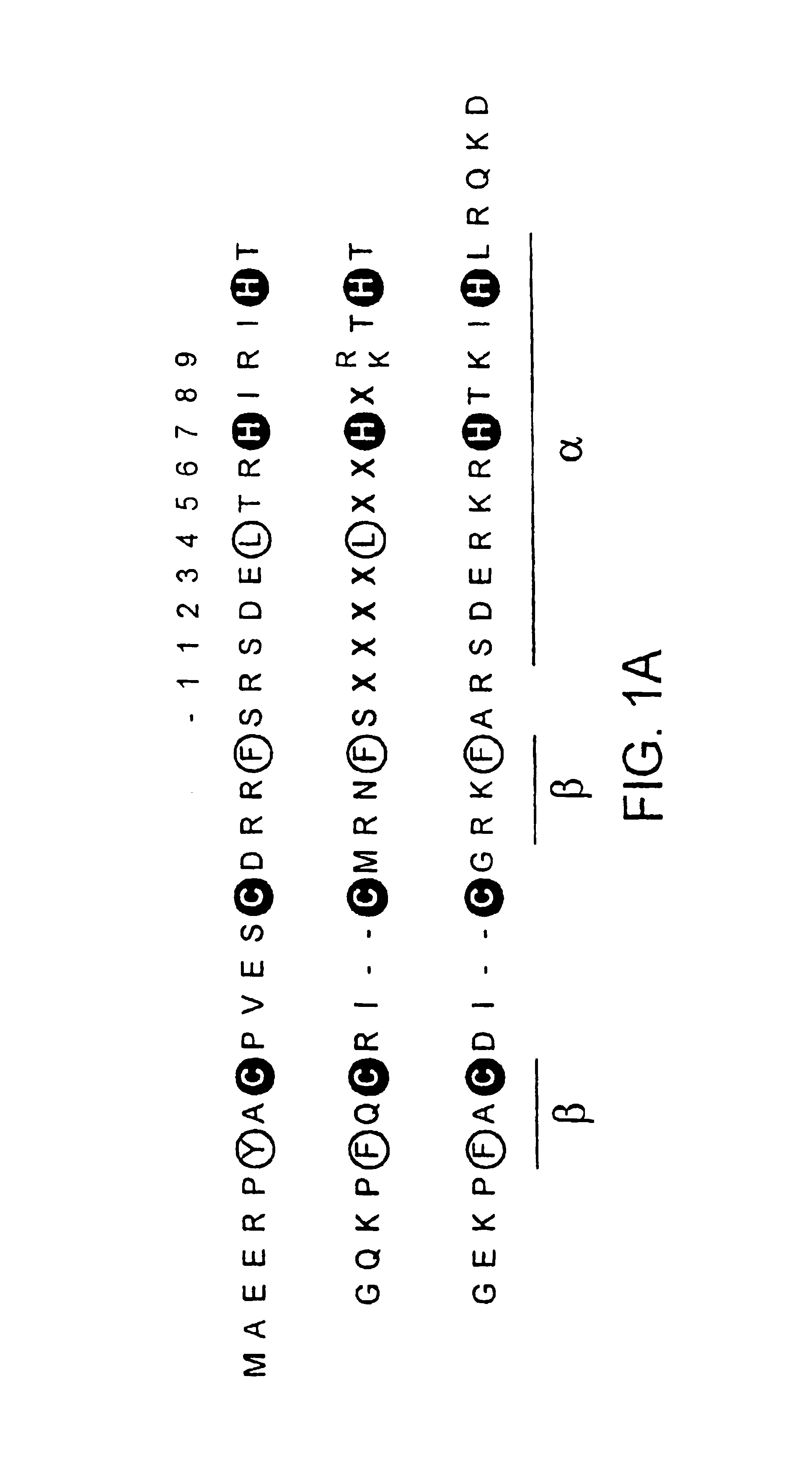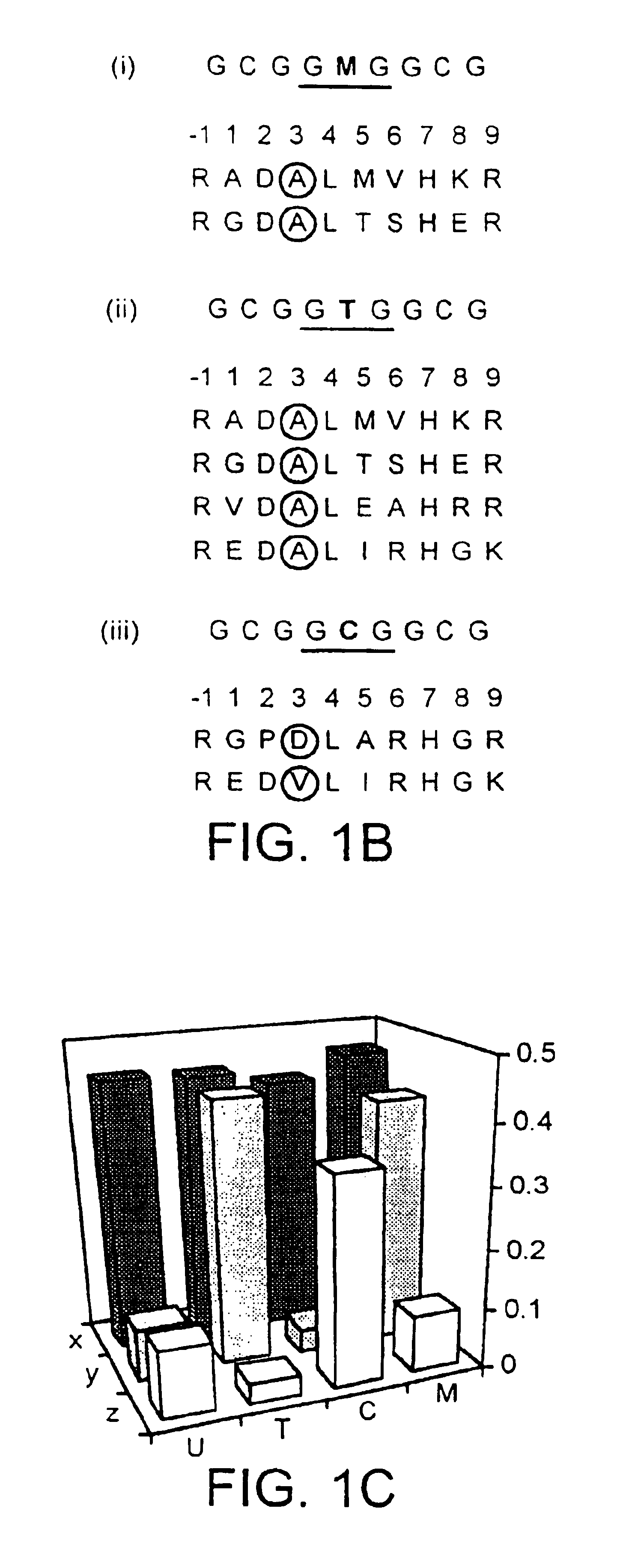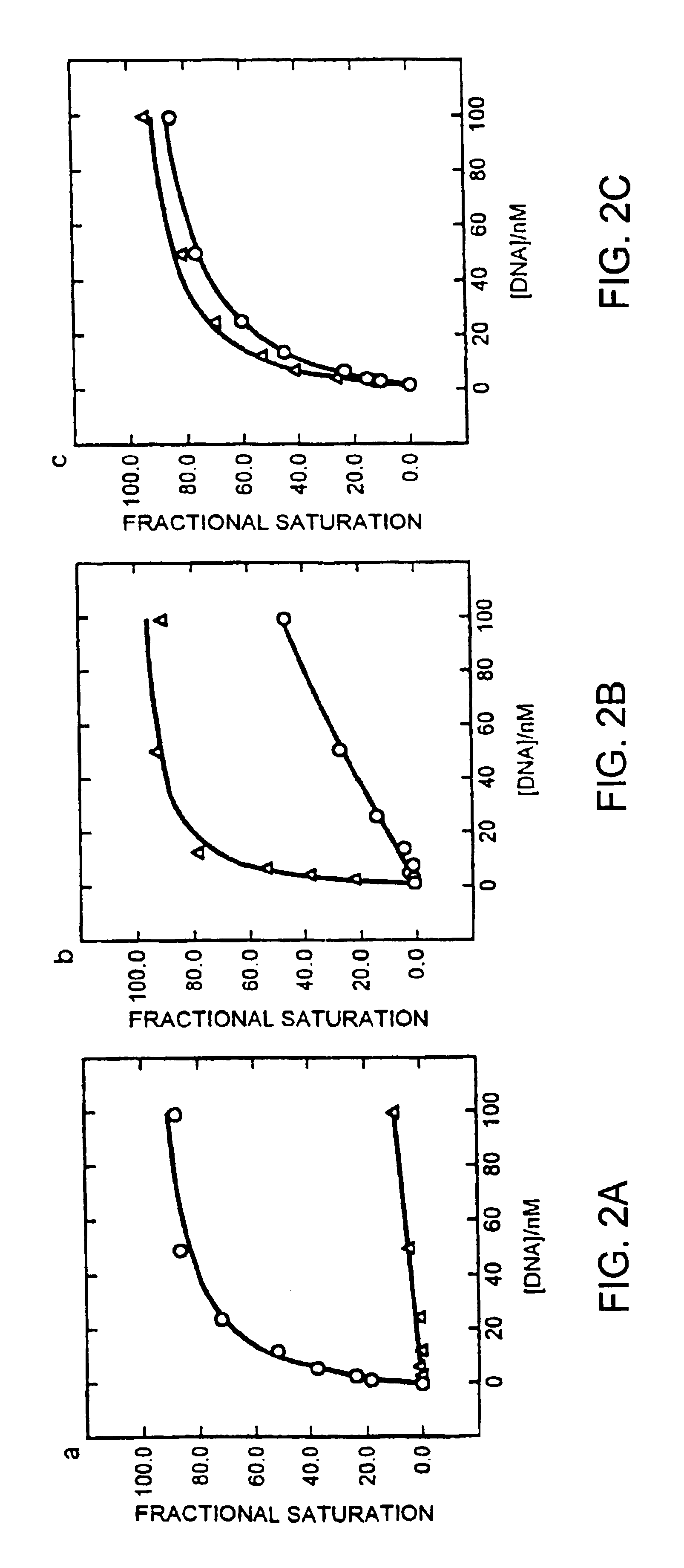Nucleic acid binding proteins
- Summary
- Abstract
- Description
- Claims
- Application Information
AI Technical Summary
Benefits of technology
Problems solved by technology
Method used
Image
Examples
example 1
Preparation and Screening of a Zinc Finger Phage Display Library
[0134]A powerful method of selecting DNA binding proteins is the cloning of peptides (Smith (1985) Science 228, 1315-1317), or protein domains (McCafferty et al., (1990) Nature 348:552-554; Bass et al., (1990) Proteins 8:309-314), as fusions to the minor coat protein (pIII) of bacteriophage fd, which leads to their expression on the tip of the capsid. A phage display library is created comprising variants of the middle finger from the DNA binding domain of Zif268.
Materials and Methods
[0135]Construction And Cloning Of Genes. In general, procedures and materials are in accordance with guidance given in Sambrook et al., Molecular Cloning. A Laboratory Manual, Cold Spring Harbor, 1989. The gene for the Zif268 fingers (residues 333-420) is assembled from 8 overlapping synthetic oligonucleotides (see Choo and Klug, (1994) PNAS (USA) 91:11163-67), giving SfiI and NotI overhangs. The genes for fingers of the phage library are s...
example 2
Isolation of Zinc Fingers Capable of C-T Differentiation
[0140]The phage are selected against oligonucleotides comprising the sequences GCGGCGGCG and GCGGTGGCG, some zinc finger DNA-binding domains are selected which bound both sequences equally well (FIG. 1b, c). However, two additional zinc finger families are isolated which are capable of differential binding to the two closely related sites (FIG. 1b, c). Sequence-specific recognition requires discrimination of the central base in the binding site by amino acids in position 3 of the recognition helix of the selected zinc fingers, and it is noted that aspartate is selected to bind opposite cytosine in the triplet GCG, while alanine is selected opposite thymine in the triplet GTG. The correlation between thymine and alanine is particularly significant, as it implies a van der Waals interaction between the amino acid side-chain and the 5-methyl group of the base. Indeed, when thymine is mutated to deoxyuracil in the binding sites of ...
example 3
Selection of 5-methylcytosine-specific zinc fingers
[0141]The phage display library is screened with the synthetic binding site GCGGMGGCG, containing a 5-meC base analogue (M). After 5 rounds of selection, zinc finger phage are tested for binding to 5-meC and cytosine in the context of the above site, and those capable of specifically binding the methylated site are sequenced in the region of the zinc finger gene. Two different clones are isolated, which are identical to the DNA-binding domains previously selected using the binding site (SEQ ID NO.: 44) GCGGTGGCG.
[0142]Hence the various zinc finger phage selections described above yield different fingers able to bind the generic DNA sequence (SEQ ID NO.: 4) GCGGNGGCG, where N is either thymine, cytosine or 5-meC. A full complement of fingers is selected for recognition of the cytosine / 5-meC pair in the above context, some of which recognize one type of base exclusively, while others bound both bases equally well (FIGS. 1c and 2).
[014...
PUM
 Login to View More
Login to View More Abstract
Description
Claims
Application Information
 Login to View More
Login to View More - R&D
- Intellectual Property
- Life Sciences
- Materials
- Tech Scout
- Unparalleled Data Quality
- Higher Quality Content
- 60% Fewer Hallucinations
Browse by: Latest US Patents, China's latest patents, Technical Efficacy Thesaurus, Application Domain, Technology Topic, Popular Technical Reports.
© 2025 PatSnap. All rights reserved.Legal|Privacy policy|Modern Slavery Act Transparency Statement|Sitemap|About US| Contact US: help@patsnap.com



